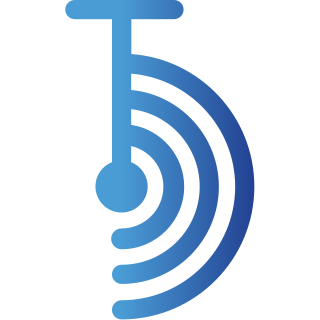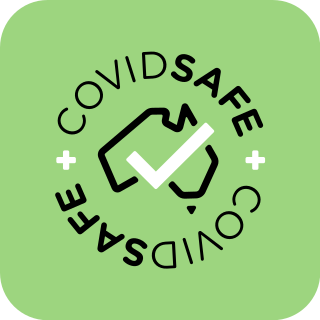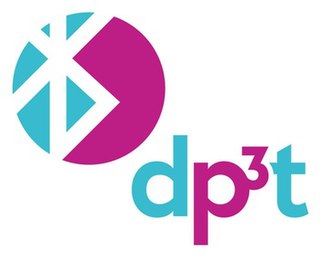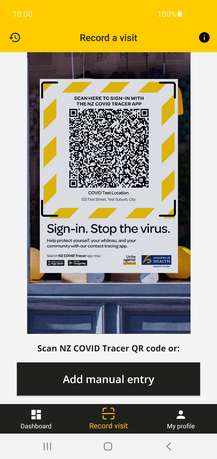Litecoin is a decentralized peer-to-peer cryptocurrency and open-source software project released under the MIT/X11 license. Inspired by Bitcoin, Litecoin was among the earliest altcoins, starting in October 2011. In technical details, the Litecoin main chain shares a slightly modified Bitcoin codebase. The practical effects of those codebase differences are lower transaction fees, faster transaction confirmations, and faster mining difficulty retargeting. Due to its underlying similarities to Bitcoin, Litecoin has historically been referred to as the "silver to Bitcoin's gold." In 2022, Litecoin added optional privacy features via soft fork through the MWEB upgrade.

Matrix is an open standard and communication protocol for real-time communication. It aims to make real-time communication work seamlessly between different service providers, in the way that standard Simple Mail Transfer Protocol email currently does for store-and-forward email service, by allowing users with accounts at one communications service provider to communicate with users of a different service provider via online chat, voice over IP, and videotelephony. It therefore serves a similar purpose to protocols like XMPP, but is not based on any existing communication protocol.
Eddystone was a Bluetooth Low Energy beacon profile released by Google in July 2015. In December 2018 Google stopped delivering both Eddystone and Physical Web beacon notifications. The Apache 2.0-licensed, cross-platform, and versioned profile contained several frame types, including Eddystone-UID, Eddystone-URL, and Eddystone-TLM. Eddystone-URL was used by the Physical Web project, whereas Eddystone-UID was typically used by native apps on a user's device, including Google's first party apps such as Google Maps.
The Signal Protocol is a non-federated cryptographic protocol that provides end-to-end encryption for voice and instant messaging conversations. The protocol was developed by Open Whisper Systems in 2013 and was first introduced in the open-source TextSecure app, which later became Signal. Several closed-source applications have implemented the protocol, such as WhatsApp, which is said to encrypt the conversations of "more than a billion people worldwide" or Google who provides end-to-end encryption by default to all RCS-based conversations between users of their Google Messages app for one-to-one conversations. Facebook Messenger also say they offer the protocol for optional Secret Conversations, as does Skype for its Private Conversations.
Wire is an encrypted communication and collaboration app created by Wire Swiss. It is available for iOS, Android, Windows, macOS, Linux, and web browsers such as Firefox. Wire offers a collaboration suite featuring messenger, voice calls, video calls, conference calls, file-sharing, and external collaboration – all protected by a secure end-to-end-encryption. Wire offers three solutions built on its security technology: Wire Pro – which offers Wire's collaboration feature for businesses, Wire Enterprise – includes Wire Pro capabilities with added features for large-scale or regulated organizations, and Wire Red – the on-demand crisis collaboration suite. They also offer Wire Personal, which is a secure messaging app for personal use.

COVID-19 apps include mobile-software applications for digital contact-tracing - i.e. the process of identifying persons ("contacts") who may have been in contact with an infected individual - deployed during the COVID-19 pandemic.

BlueTrace is an open-source application protocol that facilitates digital contact tracing of users to stem the spread of the COVID-19 pandemic. Initially developed by the Singaporean Government, BlueTrace powers the contact tracing for the TraceTogether app. Australia and the United Arab Emirates have already adopted the protocol in their gov apps, and other countries were considering BlueTrace for adoption. A principle of the protocol is the preservation of privacy and health authority co-operation.
TraceTogether was a digital system implemented by the Government of Singapore to facilitate contact tracing efforts in response to the COVID-19 pandemic in Singapore. The main goal was a quick identification of persons who may have come into close contact with anyone who has tested positive for COVID-19. The system helps in identifying contacts such as strangers encountered in public one would not otherwise be able to identify or remember. Together with SafeEntry, it allows the identification of specific locations where a spread between close contacts may occur.

The (Google/Apple) Exposure Notification System (GAEN) is a framework and protocol specification developed by Apple Inc. and Google to facilitate digital contact tracing during the COVID-19 pandemic. When used by health authorities, it augments more traditional contact tracing techniques by automatically logging close approaches among notification system users using Android or iOS smartphones. Exposure Notification is a decentralized reporting protocol built on a combination of Bluetooth Low Energy technology and privacy-preserving cryptography. It is an opt-in feature within COVID-19 apps developed and published by authorized health authorities. Unveiled on April 10, 2020, it was made available on iOS on May 20, 2020 as part of the iOS 13.5 update and on December 14, 2020 as part of the iOS 12.5 update for older iPhones. On Android, it was added to devices via a Google Play Services update, supporting all versions since Android Marshmallow.

COVIDSafe was a digital contact tracing app released by the Australian Government on 26 April 2020 to help combat the ongoing COVID-19 pandemic. The app was intended to augment traditional contact tracing by automatically tracking encounters between users and later allowing a state or territory health authority to warn a user they have come within 1.5 metres with an infected person for 15 minutes or more. To achieve this, it used the BlueTrace and Herald protocol, originally developed by the Singaporean Government and VMWare respectively, to passively collect an anonymised registry of near contacts. The efficacy of the app was questioned over its lifetime, ultimately identifying just 2 confirmed cases by the time it was decommissioned on 16 August 2022.

The Temporary Contact Numbers Protocol, or TCN Protocol, is an open source, decentralized, anonymous exposure alert protocol developed by Covid Watch in response to the COVID-19 pandemic. The Covid Watch team, started as an independent research collaboration between Stanford University and the University of Waterloo was the first in the world to publish a white paper, develop, and open source fully anonymous Bluetooth exposure alert technology in collaboration with CoEpi after writing a blog post on the topic in early March.

Digital contact tracing is a method of contact tracing relying on tracking systems, most often based on mobile devices, to determine contact between an infected patient and a user. It came to public prominence in the form of COVID-19 apps during the COVID-19 pandemic. Since the initial outbreak, many groups have developed nonstandard protocols designed to allow for wide-scale digital contact tracing, most notably BlueTrace and Exposure Notification.

Decentralized Privacy-Preserving Proximity Tracing is an open protocol developed in response to the COVID-19 pandemic to facilitate digital contact tracing of infected participants. The protocol, like competing protocol Pan-European Privacy-Preserving Proximity Tracing (PEPP-PT), uses Bluetooth Low Energy to track and log encounters with other users. The protocols differ in their reporting mechanism, with PEPP-PT requiring clients to upload contact logs to a central reporting server, whereas with DP-3T, the central reporting server never has access to contact logs nor is it responsible for processing and informing clients of contact. Because contact logs are never transmitted to third parties, it has major privacy benefits over the PEPP-PT approach; however, this comes at the cost of requiring more computing power on the client side to process infection reports.
On April 16, 2020, Nodle released The Whisper Tracing Protocol white paper and the Coalition App on Android. The protocol is intended to be a privacy first Digital contact tracing tool developed for the 2020 COVID-19 pandemic. The project has been spun off into The Coalition Foundation. The protocol is being used for the Government of Senegal's Daancovid19 mobile contact tracing app initiative. Daancovid19 is the Senegalese digital response against the coronavirus. It was started by a handful of digital professionals and subsequently brought together nearly 500 volunteer experts from the private, public, and civil society. The respective Coalition App has been promoted by the City of Berkeley, California to their residents.

NZ COVID Tracer is a mobile software application that enables a person to record places they have visited, in order to facilitate tracing who may have been in contact with a person infected with the COVID-19 virus. The app allows users to scan official QR codes at the premises of businesses and other organisations they visit, to create a digital diary. It was launched by New Zealand's Ministry of Health on 20 May 2020, during the ongoing COVID-19 pandemic. It can be downloaded from the App Store and Google Play.

Covid Watch was an open source nonprofit founded in February 2020 with the mission of building mobile technology to fight the COVID-19 pandemic while defending digital privacy. The Covid Watch founders became concerned about emerging, mass surveillance-enabling digital contact tracing technology and started the project to help preserve civil liberties during the pandemic.

Carmela González Troncoso is a Spanish telecommunication engineer and researcher specialized in privacy issues, and an LGBT+ activist. She is currently a tenure track assistant professor at École Polytechnique Fédérale de Lausanne (EPFL) in Switzerland and the head of the SPRING lab. Troncoso gained recognition for her leadership of the European team developing the DP-3T protocol that aims at the creation of an application to facilitate the tracing of COVID-19 infected persons without compromising on the privacy of citizens. Currently she is also member of the Swiss National COVID-19 Science Task Force in the expert group on Digital Epidemiology. In 2020, she was listed among Fortune magazine's 40 Under 40.

COVID Tracker Ireland is a digital contact tracing app released by the Irish Government and the Health Service Executive on 7 July 2020 to prevent the spread of COVID-19 in Ireland. The app uses ENS and Bluetooth technology to determine whether a user have been a close contact of someone for more than 15 minutes who tested positive for COVID-19. On 8 July, the app reached one million registered users within 36 hours after its launch, representing more than 30% of the population of Ireland and over a quarter of all smartphone users in the country. As of August 2021, over 3,030,000 people have downloaded the app.
Mathias Payer is a Liechtensteinian computer scientist. His research is invested in software and system security. He is Associate Professor at the École Polytechnique Fédérale de Lausanne (EPFL) and head of the HexHive research group.
Michael Veale is a technology policy academic who focuses on information technology and the law. He is currently associate professor in the Faculty of Laws at University College London (UCL).














